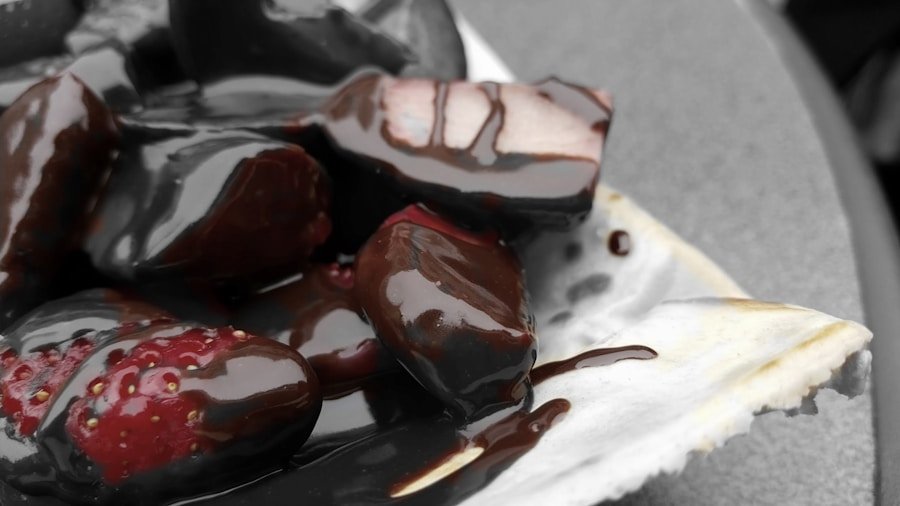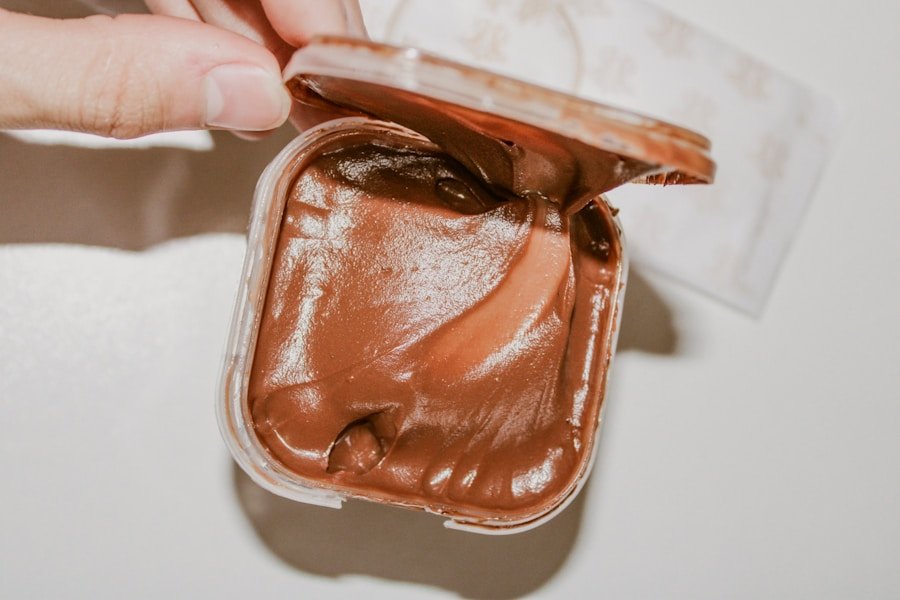Melting chocolate is a fundamental skill in the culinary world, particularly in baking and confectionery. The process of melting chocolate is not merely about achieving a liquid state; it is about transforming the chocolate into a smooth, glossy consistency that enhances both flavor and texture. Properly melted chocolate can be used for dipping, coating, or as an ingredient in various recipes, and it plays a crucial role in the final presentation of desserts.
When chocolate is melted correctly, it retains its flavor and aroma, allowing the rich, complex notes to shine through in the finished product. Moreover, the technique of melting chocolate affects its tempering, which is essential for achieving a desirable snap and sheen in chocolate confections. Tempering involves carefully controlling the temperature of the chocolate to stabilize its cocoa butter crystals.
This process is vital for creating chocolate that has a glossy finish and a firm texture at room temperature. If chocolate is melted improperly, it can become grainy or seize up, leading to disappointing results in both taste and appearance. Therefore, understanding the importance of melting chocolate properly is crucial for anyone looking to create high-quality desserts.
Key Takeaways
- Properly melted chocolate is essential for achieving the right texture and flavor in recipes.
- Choose high-quality chocolate with a cocoa butter content of at least 32% for best results when melting.
- Different methods for melting chocolate include using a double boiler, microwave, or a slow cooker.
- When using a double boiler, ensure that the water does not touch the bottom of the bowl containing the chocolate.
- When melting chocolate in the microwave, use short intervals and stir frequently to prevent overheating.
Choosing the Right Chocolate for Melting
Selecting the appropriate type of chocolate for melting is a critical step that can significantly influence the outcome of your culinary endeavors. Chocolate comes in various forms, including dark, milk, and white chocolate, each with distinct flavor profiles and melting characteristics. Dark chocolate, with its higher cocoa content, typically melts smoothly and provides a rich, intense flavor that pairs well with many desserts.
Milk chocolate, on the other hand, contains more sugar and milk solids, resulting in a creamier texture and sweeter taste. White chocolate, which lacks cocoa solids, is primarily made from cocoa butter, sugar, and milk solids; it melts easily but requires careful handling to avoid burning. When choosing chocolate for melting, it is also essential to consider the quality of the product.
High-quality chocolate bars or couverture chocolate are often preferred over chocolate chips because they contain a higher percentage of cocoa butter, which contributes to a smoother melt. Chocolate chips are formulated to hold their shape during baking, which can lead to uneven melting when used in recipes that require melted chocolate. For best results, opt for premium brands that list cocoa mass or cocoa liquor as the first ingredient.
This attention to quality will ensure that your melted chocolate not only tastes better but also performs better in your recipes.
Different Methods for Melting Chocolate

There are several methods for melting chocolate, each with its advantages and potential pitfalls. The two most common techniques are using a double boiler and melting in the microwave. The double boiler method involves placing a heatproof bowl over a pot of simmering water.
This gentle heat allows the chocolate to melt evenly without direct contact with the heat source, reducing the risk of scorching or seizing. This method is particularly favored by professional chefs because it provides more control over the melting process and allows for larger quantities of chocolate to be melted at once. On the other hand, the microwave method offers convenience and speed, making it a popular choice for home bakers.
By using short bursts of heat at low power settings, you can melt chocolate quickly while minimizing the risk of overheating. However, this method requires careful attention; if left unattended or heated too long, chocolate can easily burn or seize up. Each method has its place in the kitchen, and understanding when to use one over the other can enhance your overall baking experience.
Tips for Melting Chocolate in a Double Boiler
| Tip | Description |
|---|---|
| Use a Heatproof Bowl | Place the chocolate in a heatproof bowl that fits snugly over the top of the double boiler. |
| Simmering Water | Ensure the water in the bottom of the double boiler is simmering, not boiling, to gently melt the chocolate. |
| Stir Constantly | Stir the chocolate constantly to prevent it from burning or seizing. |
| Remove from Heat | Once the chocolate is almost completely melted, remove it from the heat and continue stirring until smooth. |
| Avoid Water Contact | Avoid getting any water in the chocolate, as it can cause the chocolate to seize and become unusable. |
When using a double boiler to melt chocolate, there are several tips to ensure success. First and foremost, it is crucial to keep water from coming into direct contact with the chocolate. Even a small amount of moisture can cause chocolate to seize, resulting in a grainy texture that is difficult to work with.
To prevent this, make sure that the bowl you use fits snugly over the pot without touching the water. Additionally, it’s important to keep the water at a gentle simmer rather than a rolling boil; excessive steam can also introduce moisture into the bowl. Another key tip is to chop the chocolate into uniform pieces before placing it in the bowl.
Smaller pieces melt more evenly and quickly than larger chunks, reducing the risk of overheating some parts while others remain solid. Stirring frequently as the chocolate begins to melt helps distribute heat evenly and promotes a smooth consistency. Once melted, remove the bowl from heat immediately to prevent residual heat from causing the chocolate to overheat.
By following these guidelines, you can achieve perfectly melted chocolate ready for use in your favorite recipes.
Tips for Melting Chocolate in the Microwave
Melting chocolate in the microwave can be an efficient way to achieve a smooth consistency if done correctly. Start by breaking or chopping your chocolate into small, even pieces and placing them in a microwave-safe bowl. It’s advisable to use glass or ceramic bowls rather than plastic ones since they can retain heat and may warp under high temperatures.
Set your microwave to low power—around 50%—to avoid overheating the chocolate too quickly. Heat the chocolate in short intervals of 20-30 seconds, stirring between each interval. This stirring is crucial because it helps distribute heat evenly throughout the chocolate and allows you to monitor its progress closely.
If you notice any lumps remaining after several intervals, continue stirring; residual heat can often melt these lumps without additional microwaving. Once most of the chocolate has melted but small lumps remain, remove it from the microwave and continue stirring until completely smooth. This technique prevents overheating and ensures that your melted chocolate maintains its ideal texture.
Common Mistakes to Avoid When Melting Chocolate

Several common mistakes can hinder your efforts when melting chocolate, leading to undesirable results. One significant error is using high heat or microwaving for too long without stirring. Chocolate is sensitive to temperature changes; overheating can cause it to burn or seize up completely.
It’s essential to approach melting with patience and care, using low heat settings and short intervals regardless of the method chosen. Another frequent mistake is not preparing your equipment properly. Any moisture present on utensils or bowls can lead to seizing; therefore, ensure that all tools are completely dry before use.
Additionally, using inferior quality chocolate can result in poor melting performance and flavor issues. Always opt for high-quality products designed for melting when embarking on your culinary projects. By avoiding these pitfalls and adhering to best practices, you can achieve consistently excellent results when melting chocolate.
Using Melted Chocolate in Recipes
Melted chocolate serves as a versatile ingredient in numerous recipes across various culinary applications. It can be used as a coating for fruits like strawberries or bananas, providing an elegant touch to simple treats. Additionally, melted chocolate can be incorporated into batters for cakes or brownies to enhance their richness and depth of flavor.
When combined with whipped cream or butter, it creates luscious ganaches that can be used as fillings or frostings for cakes and pastries. Beyond traditional baking applications, melted chocolate can also be utilized in creating decorative elements such as drizzles or curls that elevate desserts visually. For instance, drizzling melted white or dark chocolate over cookies or cakes adds an artistic flair while enhancing flavor profiles.
Furthermore, melted chocolate can be poured into molds to create custom chocolates or used as an ingredient in homemade candy bars or truffles. The possibilities are virtually endless when it comes to incorporating melted chocolate into your culinary creations.
Storing and Reheating Melted Chocolate
Proper storage of melted chocolate is essential if you plan on using it later or have leftovers after a baking session. Allow the melted chocolate to cool slightly before transferring it into an airtight container; this helps prevent moisture from entering and causing seizing upon cooling. Store the container at room temperature if you plan on using it within a few days; however, if you need longer storage time, refrigeration may be necessary.
When reheating stored melted chocolate, take care to do so gently to avoid burning or altering its texture. If refrigerated, allow it to come back to room temperature before reheating; this will help maintain its smooth consistency. Use either a double boiler or microwave method as previously described but remember to do so gradually—short intervals with frequent stirring will yield the best results.
By following these storage and reheating guidelines, you can ensure that your melted chocolate remains usable and delicious for future culinary endeavors.
If you’re looking for ways to improve your kitchen skills, you may also be interested in checking out this article on the 5 Best Wall Art for Your Kitchen. Adding some stylish decor to your cooking space can inspire creativity and make the room more inviting. Plus, it’s always nice to have a beautiful backdrop while you’re perfecting your chocolate melting technique.
FAQs
What is the best method for melting chocolate without burning it?
The best method for melting chocolate without burning it is to use a double boiler or a microwave. Both methods allow for gentle, even heating of the chocolate to prevent burning.
How do you use a double boiler to melt chocolate?
To use a double boiler to melt chocolate, simply fill the bottom pot with a few inches of water and bring it to a simmer. Place the chocolate in the top pot or heatproof bowl, and place it over the simmering water. Stir the chocolate occasionally until it is melted and smooth.
What is the best way to melt chocolate in the microwave?
To melt chocolate in the microwave, place the chocolate in a microwave-safe bowl and heat it in 30-second intervals, stirring in between each interval. Be careful not to overheat the chocolate, as it can easily burn in the microwave.
Why is it important to melt chocolate slowly and gently?
It is important to melt chocolate slowly and gently to prevent it from burning. Chocolate has a low melting point and can easily scorch if exposed to high heat. Slow, gentle heating allows the chocolate to melt evenly and maintain its smooth texture.
What are some tips for melting chocolate without burning it?
Some tips for melting chocolate without burning it include using high-quality chocolate, chopping it into small, uniform pieces, and stirring it frequently during the melting process. It is also important to avoid getting any water or steam in the chocolate, as this can cause it to seize and become lumpy.

